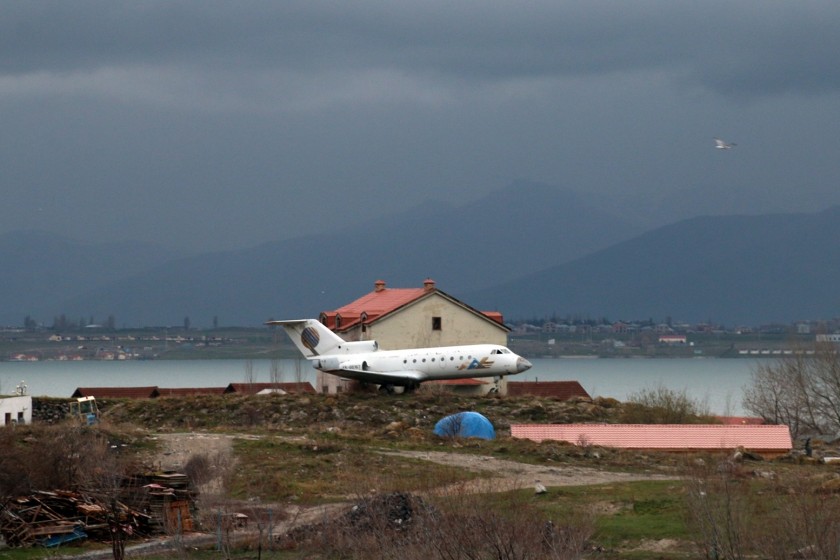
Armenia’s ‘Winged’ Attractions: Planes, Both Combat and Passenger, On Display in Museums and the Most Unlikely of Spots
Vahe Sarukhanyan
Throughout Armenia, apart from historical and architectural monuments, one can locate the skeletons of airplanes that have long stopped flying. These aircraft are not only exhibited at museums, but also at sites that at first glance appear odd.
One of these sites is located on the grounds of the Mayr Hayastan (Mother Armenia) Memorial overlooking Yerevan.
On display is a MiG-19 - a Soviet second-generation fighter aircraft. Design and development of such aircraft began after the Great Patriotic War, in the 1950s. Approximately 6,500 MiG-19s of all versions were produced. The aircraft saw service not only in USSR, but also in the air forces of several countries in Asia, Africa, and the socialist bloc. The aircraft and its Chinese version (J-6), saw combat during the Vietnam War, the 1967 Six Day War, and the 1971 Bangladesh War.
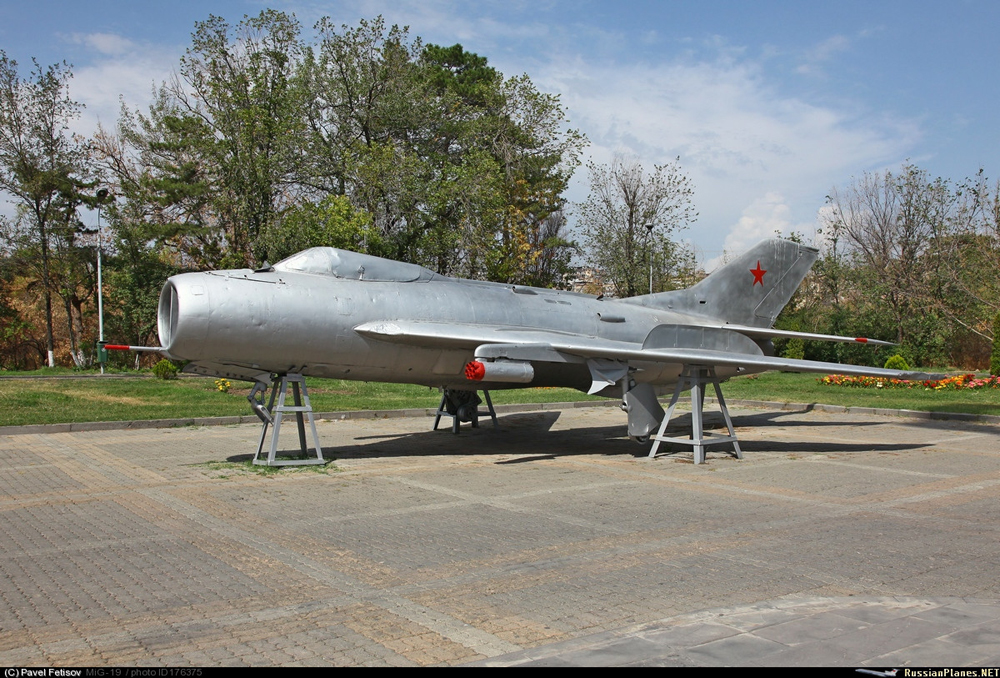
MiG-19S in Yerevan (2015)
It should be noted that from 1938-1960, Yerevan’s Erebouni Airport was used as a base for Soviet aviation units, but they used older generation aircraft than the MiG-19.
Another MiG is part of the memorial built next to the famous Mikoyan Brothers' Museum in the Armenian village Sanahin. One of the brothers, Artem, was one of the designers of the MiG. The other was Mikhail Gurevich (Mikoyan + Gurevich = MiG). The museum and the memorial were opened in the summer of 1982, years after the brothers died. The MiG-21 fighter, brought from Moscow, and Artem Mikoyan’s ZIM limousine, are among the most valuable showpieces in the museum.
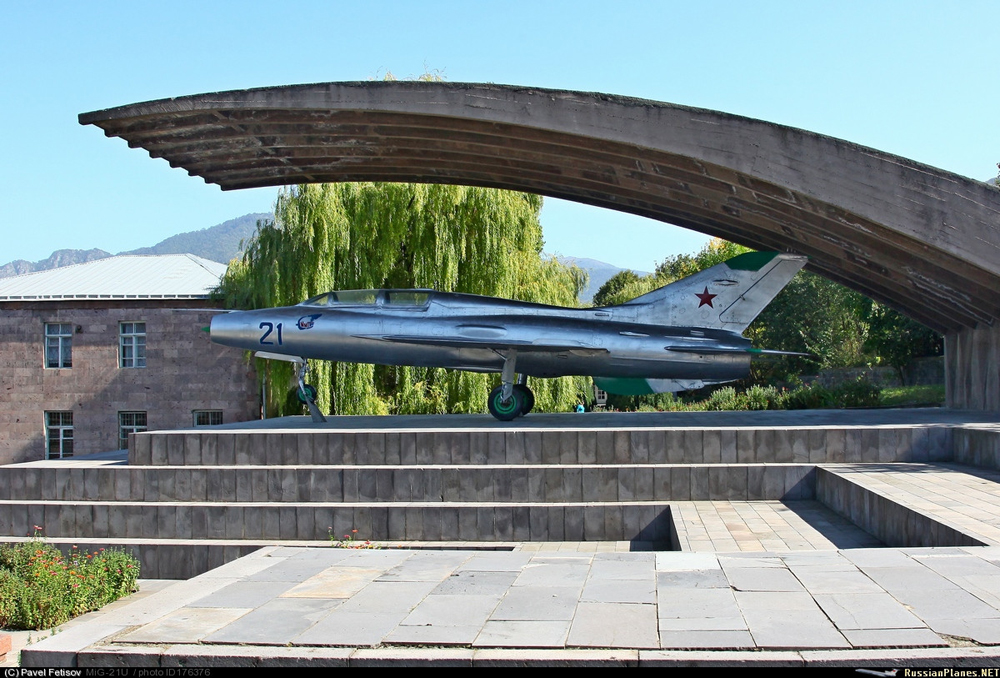
MiG-21U at Sanahin (2015)
MiG-21s were put into service in the mid-1950s. They were used in the air forces of many countries. Overall, more than 11,000 were produced. The fighter also had its Chinese version – the J-7. MiG-21s fought in the Vietnam War, the 1999 Kargil war, the 1980 Iran-Iraq War, the 1977 Libyan-Egyptian border war, the 1977 Ogaden War, wars in Lebanon and those in Yugoslavia, among others.
Another MiG fighter is now located in the Mets Taghlar village in Artsakh,birthplace of Soviet Air Marshal Armenak Khanperyants (Sergey Khudyakov). The MiG-17 is situated in front of the museum, operating since 1984, where items devoted to the marshal and other military personnel born in the village are exhibited alongside archaeological finds.

Mets Taghlar’s MiG-17 (2012)
MiG-17s entered service in the early 1950s, after the success of its predecessor, the MiG-15. In the Soviet Union alone, some 8,000 units were produced. Another 3,000 were produced in other countries under a licensing deal. Like the above-mentioned aircraft, these were not only used for military patrols, but also during the wars in Vietnam and the Middle East.
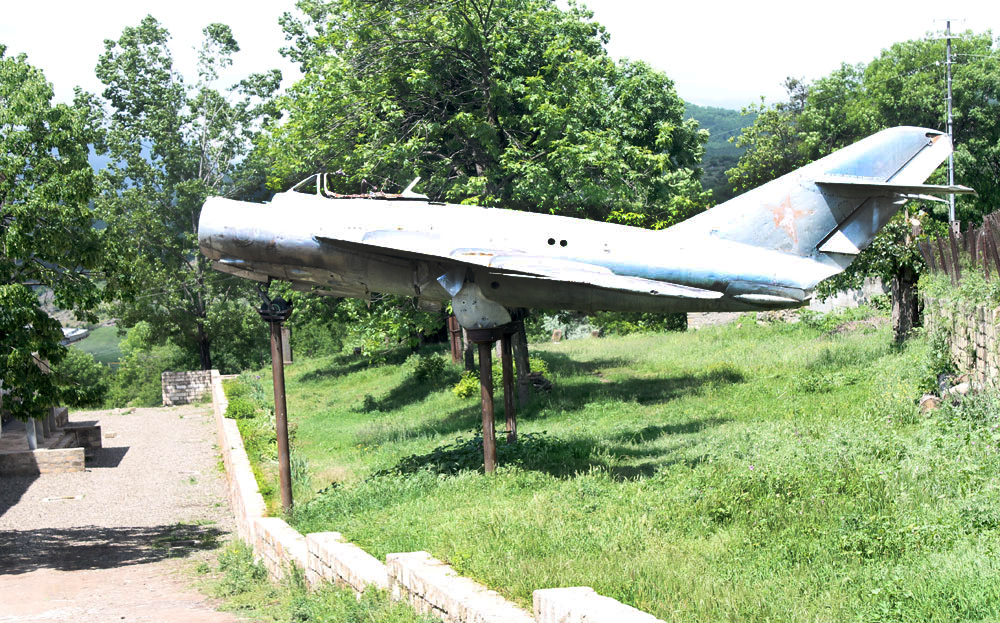
MiG-17 (2016)
While combat MiGs are logically found near museums related to the military, other aircraft that have been turned into monuments seem to have nothing to do with the surrounding locale.
There’s a Yak-40 passenger aircraft parked on the grounds of the Noy Land Resort, between the villages Chkalovka and Norashen, in Armenia’s Gegharkounik Province. The site is near the shore of Lake Sevan. It once belonged to Armenian Airlines, as evidenced from the half-deleted inscriptions on the aircraft.
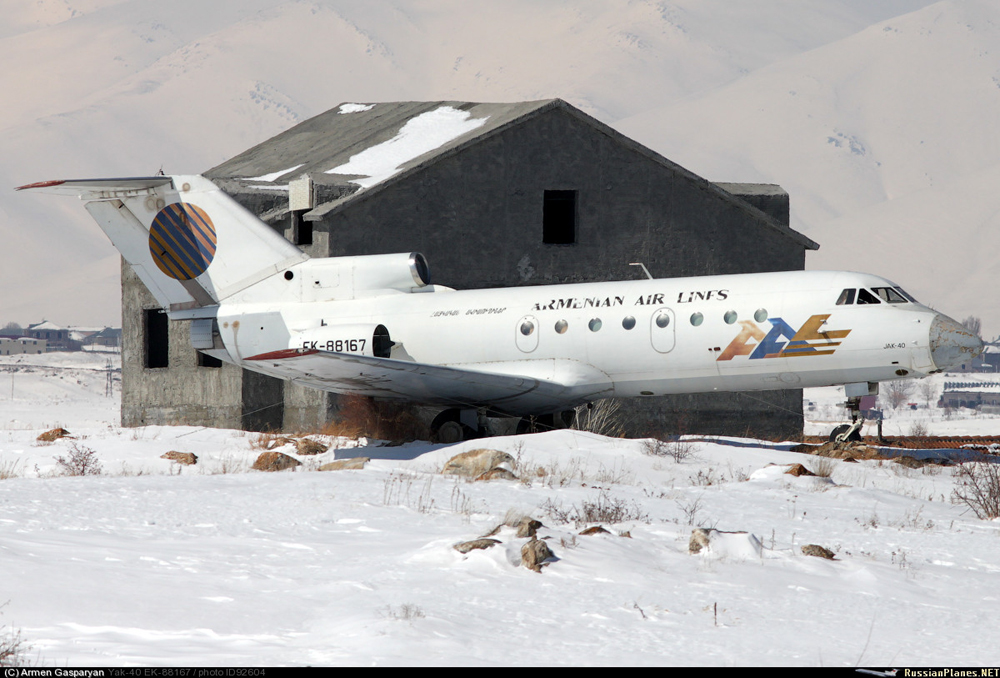
The Yak-40 on the shore of Sevan (2012)
Small Yak-40 aircraft were famous both in the USSR and abroad, being used for local and regional lines. During 1960-80's, more than 1,000 were produced.
This particular plane was produced at the Saratov Aviation Plant in 1976. It began to fly the same year. Initially, it was at the disposal of the Armenian Department of the USSR Ministry of Civil Aviation, and flew under Aeroflot name bearing the number USSR-88167.
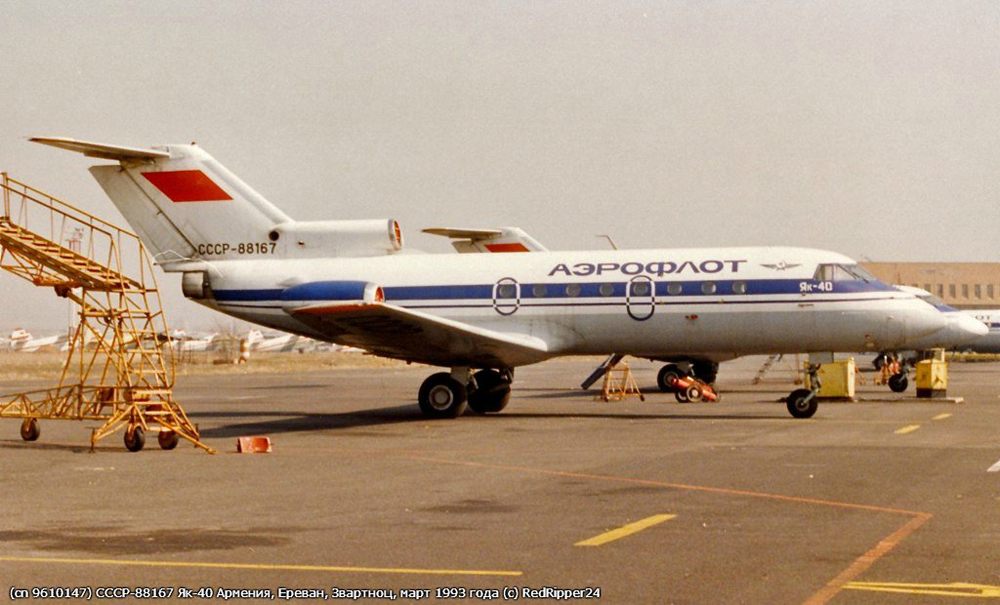
The plane in 1993
After the collapse of the Soviet Union, when aviation depots passed to the independent republics, this Yak-40 entered the fleet of the new Armenian Airlines as the EK-88167.
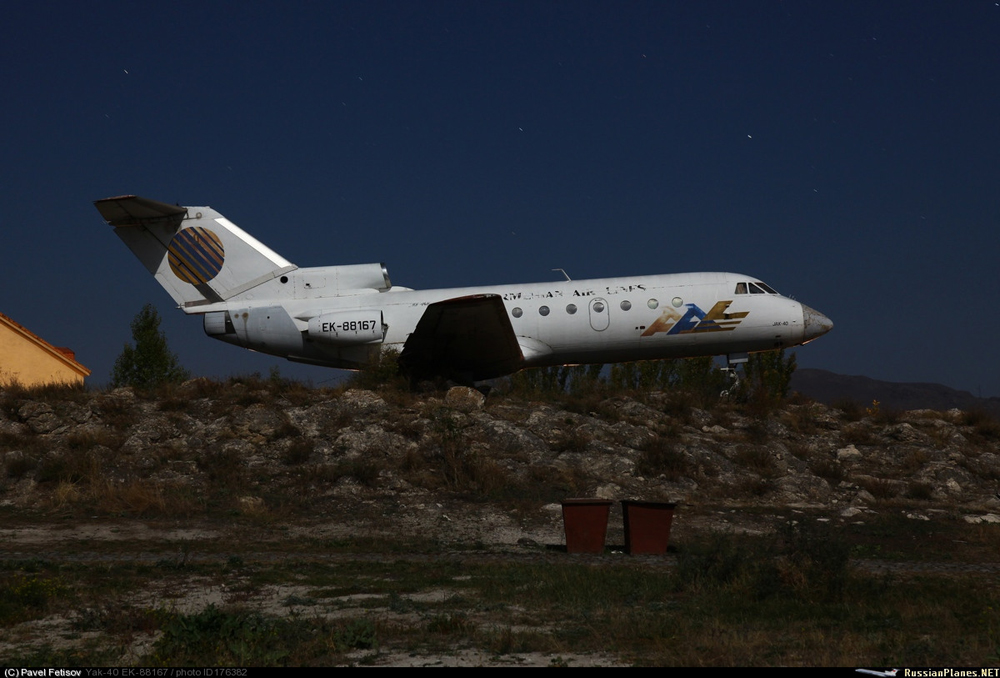
The EK-88167 on the Sevan shore (2015)
Ararat Avia CJSC was a by-product of Armenian Airlines. The company operated out of Erebuni Airport and flew the Yak-40, the An-12 and An-24 planes, and Mi-8 helicopters, belonging to Armenian Airlines.
The EK-88167 was also under Ararat Avia’s disposal for a while. In 1999, the Armenian government decided to reorganize the company by joining it with Armenian Airlines. All aircraft were moved to Zvartnots Airport, except for helicopter squadron. The tough times for Armenian Airlines had begun in 1998, resulting in the company going bankrupt in the spring of 2004.
The EK-88167 had a unique fate. It was parked at Zvartnots for a time, and then moved to the Lake Sevan shore, to be used as a café.
Another Yak-40 belonging to Armenian Airlines is now standing next to the Lake Van restaurant in Ashtarak, on the bank of Kasagh River. It’s in much worse shape than the Lake Sevan Yak-40.
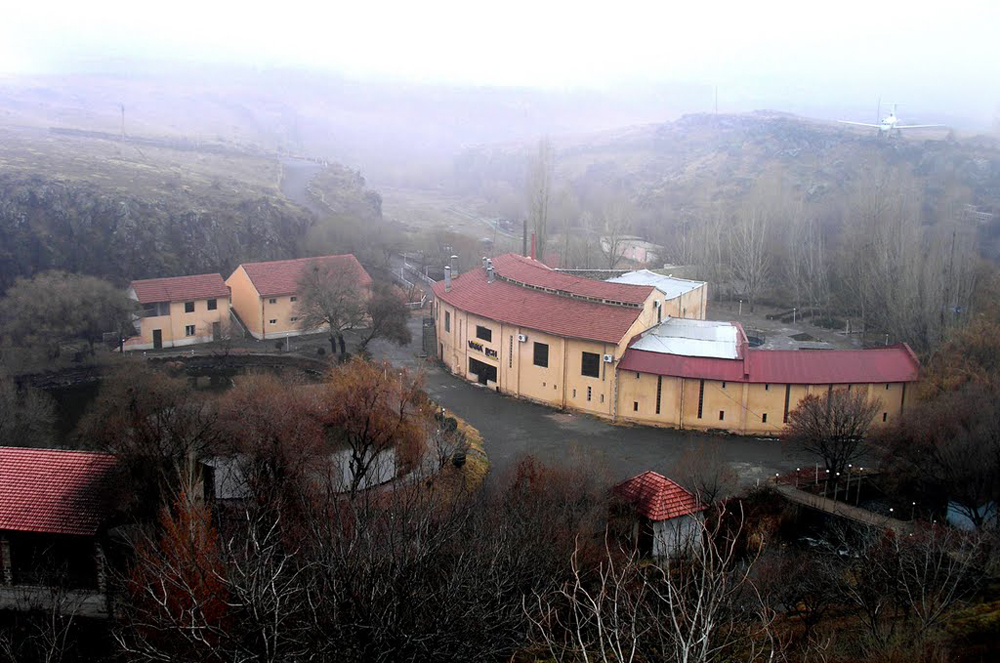
Lake Van restaurant and plane (2011)
This plane was also produced in Saratov, in 1977, the birthplace of Yak-40s. It flew that same year. Like the previous Yak-40, it was also put at the disposal of the Armenian Department of the USSR Ministry of Civil Aviation from the beginning, flying under the number USSR-88256.
After Armenia got independence, it entered Armenian Airline’s fleet, and became EK-88256. The plane had been taken out of service by 1997, and moved to Ashtarak in the early 2000s.
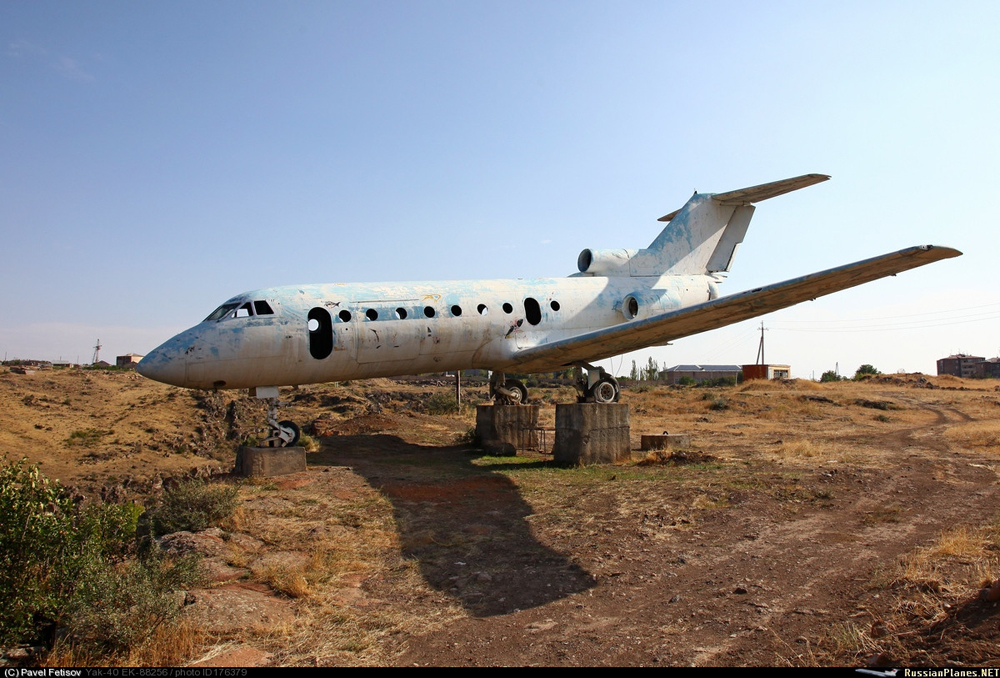
The EK-88256 in Ashtarak (2015)
Top Photo: A Yak-40 on the Lake Sevan shore (photo by Hakob Poghosyan)
 Videos
Videos Photos
Photos




Comments (1)
Write a comment